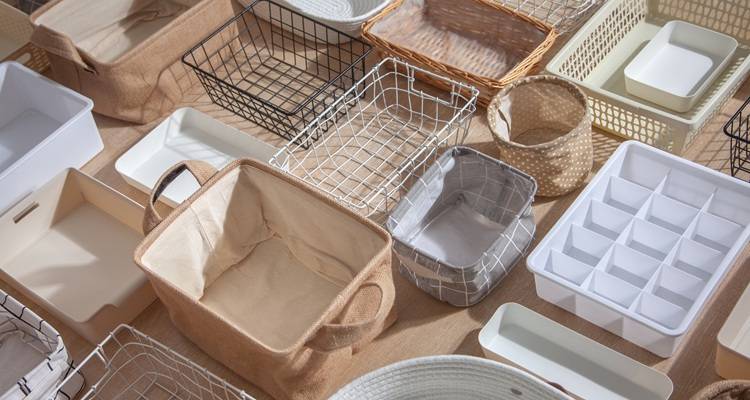Prepare for Power Cuts
Power cuts can happen at any time. Whether it be due to harsh weather conditions, grid overload, equipment failure, or a case of short circuiting or circuit breaking in your home, it’s important to prepare for power cuts.
In this guide, we’ll explain how to best prepare for power cuts and how these steps can make life a lot easier whenever a power cut occurs.
Let’s begin!

How to Prepare for a Power Cut
According to Statista, the average number of minutes that customers lost due to power cuts was between 30 and 50 (depending on the provider) in 2021.
While power cuts do not happen that often, they do happen occasionally for virtually every home in the country. So, without further ado, here are the best ways to ensure you are prepared for a power cut.
Torches and Batteries
It’s important to have several torches with fresh batteries in preparation for a future power outage.

We recommend keeping these torches (ideally at least one for every member of the household) in an accessible place that is easy to remember. Beyond that, you’ll want to have additional batteries should your torches run low on battery over time from different uses.
Obviously, torches will only be necessary should a power cut happen when it’s dark (or getting dark). But, of course, the chances of this occurring are reasonably strong, particularly during the winter when nights are getting longer.
Emergency Contact List
There are various key and emergency contacts you should have listed and kept in a safe and easy-to-remember location of your home.
Emergency and key contacts you should keep listed include:
- Distribution Network Operator - 105*
- Your local water company
- Your gas company
*Calling this number will allow you to connect to your distribution network operator.
Ensure Devices are Charged
You’ll also want to keep key devices charged, like mobile phones, tablets, and laptops. However, keeping mobile phones sufficiently charged at any given time is the most important step to take when it comes to charging devices. After all, you’d likely need to in order to contact any numbers on the emergency contact list.
It’s best to charge a mobile phone whenever it begins to drop below 30% charge. Also, it’s not necessary to let it charge all the way up to 100%. Instead, feel free to plug it out when it reaches around 90%.

Also, as a key precaution, it’s best not to leave a mobile phone (or any device for that matter) charging overnight. This is because in the event that a charger or charging device caught on fire, there would be less time to react and a higher risk of a fire spreading before everyone can safely leave the property.
This is partly because your senses won’t wake up and working fire/smoke alarms will only go off once they actually detect the heat or smoke, which won’t be instantly. So, rather than taking the risk, you should only charge devices during waking hours.
Charger Power Banks
Having charge power banks on the ready is a great way of preparing your home for a future power cut.
Charger power banks can be used to connect a mobile phone (or another device) via a charger to power it should you be in the middle of a prolonged power cut or/and your device’s battery was reasonably low, to begin with when the power outage occurred. You can pick one of these up for around £30 to £100 in most cases.
Ensure Essential Medication Is Stored and Easily Accessible
One of the most important steps you’ll want to take is to ensure that key medication is stored somewhere safe that is easy to access and remember. With that said medication of any kind should still be stored in a location that (while accessible to those who need it) is not somewhere that kids or pets might access.
Essential medication can include medication required for physical and mental health and any medication that is needed on a regular basis (e.g., daily) or as needed, which could (presumably) be at any time.
So, be sure not to overlook this step by thinking through the storage of essential medication carefully and with future power cuts in mind.
Have Sufficient Food and Water Backups
Households should also have ready-to-eat food and three days of water. For example, you could keep in date bottled water but be absolutely sure to use these up before they go out of date and replace them.

This is because they will go bad within 1.5 to 2 years after purchase and assuming they are unopened.*
*If bottled water is opened, it must be used within three days.
Ways of Keeping Warm
Beyond that, having ways to keep warm is important, especially in the autumn, spring, and winter.
Ways to prepare for keeping warm during a power cut or taking action in the middle of a power outage include:
- Closing Doors and Windows
- Have warm covers on the ready
- Ideally, always have some fresh warm clothes (e.g., jumpers and thick socks) on the ready
- Surge Protectors
- One way of reducing the chances of a power outage (and specifically one that is the result of voltage spikes) is to have a surge protector fitted to your home by a professional
Surge Protectors
One way of reducing the chances of a power outage (and specifically one that is the result of voltage spikes) is to have a surge protector fitted to your home by a professional.

If you'd like to hire an electrician to install a surge protector in your home, check out local electricians here!
Last updated by MyJobQuote on 25th October 2023.







